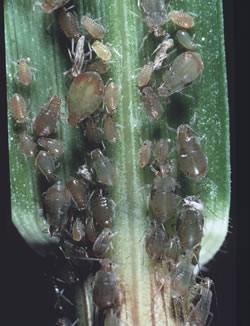
Delayed by dry weather, the late flush of cereal volunteers in many young oilseed rape crops has created the ideal 'green bridge' for aphids. These will carry BYDV to move onto this autumn's cereal crops.
This is the warning from Clare Tucker, Agronomy Manager, BASF, following a mid-September assessment of crops in central and southern England.
"During the dry spell few volunteers germinated in time to be sprayed off prior to the drilling of the oilseed rape. Now volunteers are emerging in large numbers," she says.
"The heavy crop of volunteers represents an ideal breeding ground for aphids before they move on to the new emerging winter cereal crops. Add to this the fact that the oilseed rape area has increased this autumn and you have a scenario for widespread aphid activity."
With regard to the risk of BYDV infection via the aphids, she reminds growers that many crops did not get sprayed against aphids last autumn due to the wet weather in October.
"The evidence of BYDV infection was there to see in a some winter-sown cereal crops and trial sites this spring – so it would be foolish to ignore all the signs of a significant BYDV risk this autumn," she says
Clare Tucker's advice to growers who have used an insect-active seed dressing is to check crops for aphids five to six weeks after drilling. If aphids are present or if there is a history of BYDV, then a long lasting pyrethroid product such as Sumi-Alpha must be applied immediately.
"Where there is no seed dressing protection, it is imperative to apply a pyrethroid spray as soon as the crop emerges, if damaging early infections are to be avoided. This must be a long lasting product to have an effect into the autumn," she says.
